
After hiking up the Capitoline Hill early one morning I found the sun just breaking out and fortuitously lighting up the Italian flag outside Palazzo Senatorio, where the Mayor of Rome presides, though I don't expect he gets to the office until later.

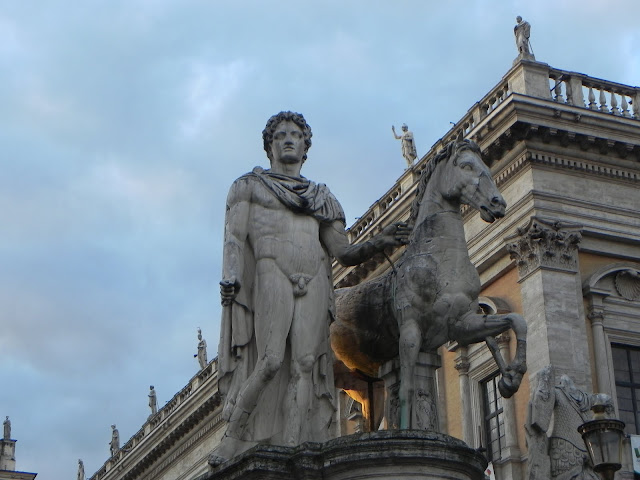
The statues that greet everybody entering the Piazza del Campidoglio represent Castor and Pollux, with their horses. "They are restored late Roman works that were found in the 16th century in the Ghetto (where a temple to them once stood)." Michelangelo set them up in their present location and did most of the design work that makes this hilltop square such a satisfying destination.



Echoing the twin statues, Michelangelo also designed twin buildings to face each other across the Piazza. The Capitoline Museum is located in both of them now.



He put a balustrade along the top of each one, with statues standing on it. When you just look at the severe classical elements Michelangelo used, you can see why people casually refer to him as a Renaissance architect, but when you look at those statues waving at each other with their swords from the tops of those ornamental railings, then you see why other people confidently also talk about him as the Father of Baroque.


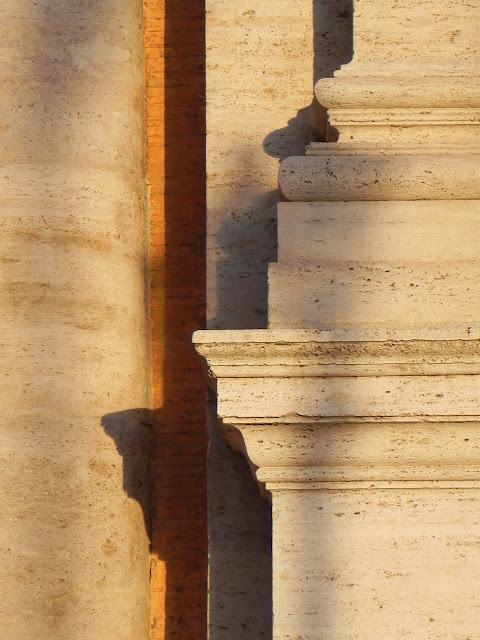
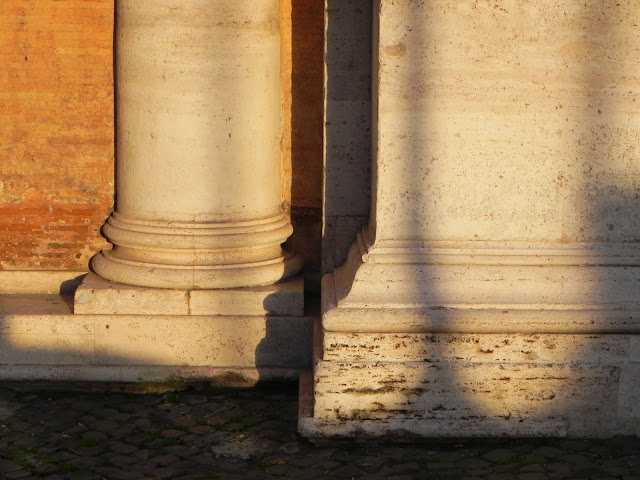
The equestrian statue of Marcus Aurelius in the center of the Piazza is a "disappointing copy" according to the guide book. The authentic Roman one, of gilt bronze, is inside the museum. Henry James said, "I doubt if any statue of King or captain in the public places of the world has more to commend it to the general heart."
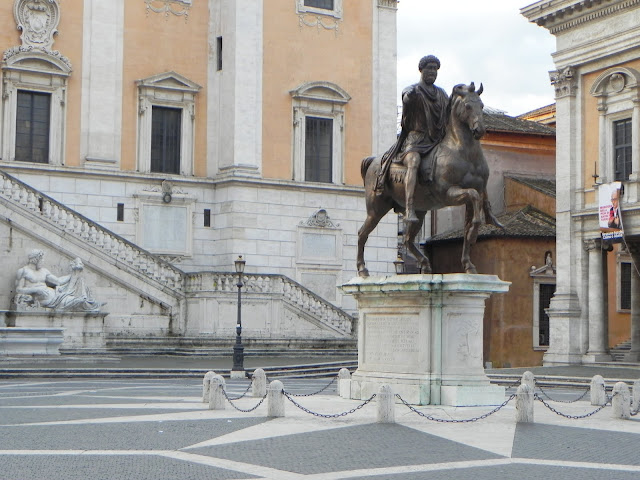

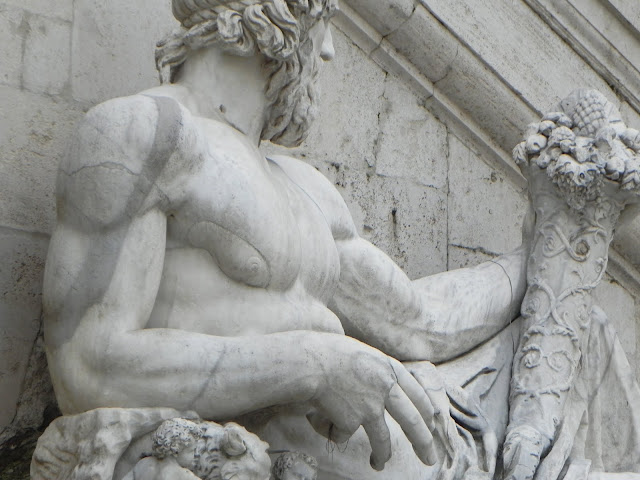

The Nile and the Tiber seen above are genuine Roman river gods. They have a lot more prestige than the much later river gods we already saw in Piazza del Popolo. Michelangelo decided where to put these and built the white travertine double staircase as a background to set off their charms.
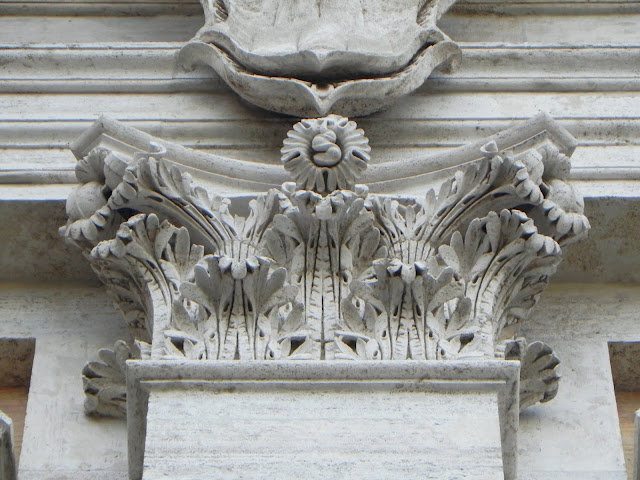

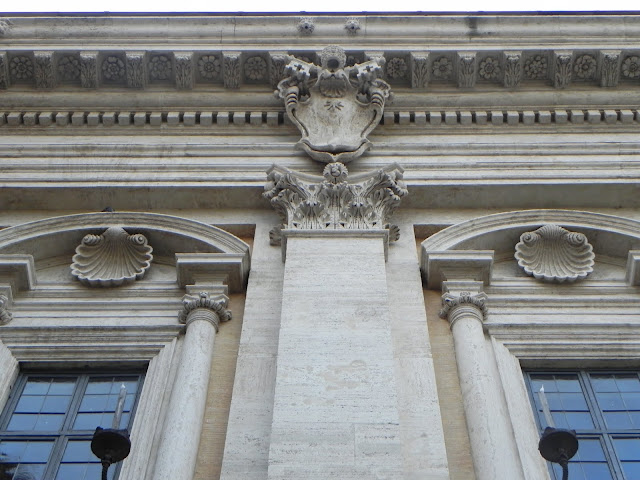

During my whole time in Rome the picture above was the only one I took of the Colisseum, which I did not even see in the far distance between Michelangelo's columns at the time when the picture was taken. There is also a she-wolf on a pedestal suckling human babies out there beyond the columns, and I did not see her either. A good example of how I only had eyes for what I cared about, which was almost always the art immediately in front of me. This could, of course, also be described as tunnel vision.